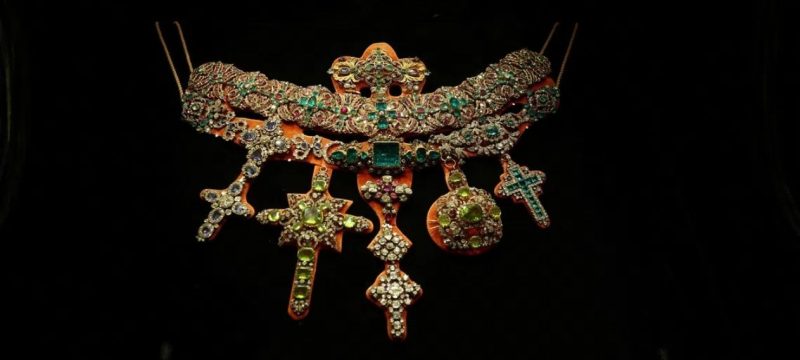As global headlines swirl around the missing jewels from the Louvre, an Italian museum is quietly demonstrating a technology that could make such thefts nearly impossible to profit from.
Inside Naples’ Museum of the Treasure of San Gennaro, gemology experts have spent more than a decade mapping every emerald, ruby, and diamond in the collection — photographing their unique internal “fingerprints” under microscopes to create an unforgeable forensic identity for each stone.
This extraordinary initiative, known as forensic gemstone mapping, gives the museum’s priceless collection a kind of DNA-level protection that even the most skilled thieves can’t erase.
“If the Louvre had adopted this system, thieves would not be able to resell the stones,” said Ciro Paolillo, a former professor of investigative gemology at La Sapienza University in Rome, who led the mapping project. “Each gem is identifiable, even if cut or altered.”
A $100 Million Treasure Protected by Science
The Treasure of San Gennaro — a dazzling collection of sacred art and jewelry amassed over seven centuries — is valued at over €100 million ($116 million). It includes a cross adorned with emeralds and diamonds gifted by Joseph Bonaparte, Napoleon’s elder brother and former King of Naples, as well as a bishop’s mitre encrusted with nearly 4,000 gems and a necklace with over 1,500 jewels.
Nestled beside Naples Cathedral, the museum holds over 21,000 pieces, many donated by popes, monarchs, and noble families. But unlike most religious collections in Italy, this treasure doesn’t belong to the Vatican or the state — it’s owned by the people of Naples, managed by a lay institution called the Deputazione, founded in 1527.
Technology Meets Devotion

The gem-mapping process uses high-resolution photography and microscopy to document each stone’s internal inclusions — natural imperfections that act as a biometric signature. These images are stored in a digital database that can confirm a gem’s identity anywhere in the world.
“We have anti-theft glass, 24-hour military patrols, and advanced alarms,” said Riccardo Carafa d’Andria, vice president of the Deputation. “But if something were ever stolen, the mapping would allow us to recognize it instantly.”
While the system may sound like science fiction, it has proven invaluable in securing the collection, especially in a city with one of Italy’s highest crime rates.
A Dark Past — and a Safer Future
The Treasure of San Gennaro has not always been so well protected. In 1975, the collection narrowly escaped an attempted heist by the Camorra, Naples’ notorious mafia. The treasures were hidden in the Bank of Naples vault for nearly 30 years afterward, reopening to the public in 2003.
Since then, no thefts have been reported — a remarkable record for a city once synonymous with organized crime.
“Out of devotion to their patron saint, Neapolitans would never touch the treasure — nor allow anyone else to,” Carafa d’Andria added proudly.
Lessons for the Louvre and Beyond
In the wake of the recent Louvre robbery, which saw thieves exploit blind spots in the museum’s aging security system, experts say Naples’ method could become a model for institutions worldwide.
The Louvre’s director, Laurence des Cars, admitted she had long warned about the museum’s vulnerable infrastructure, including unmonitored windows and incomplete CCTV coverage.
While suspects have been arrested, the stolen jewels have not been recovered — raising fears they may be dismantled and sold. But with Naples’ forensic gemology approach, such a scenario would be futile.
As Paolillo noted, “The moment a stolen gem undergoes a quality certification, it would be flagged — just like identifying a fingerprint at a crime scene.”
A Blend of Faith, History, and Cutting-Edge Science
For Naples, this isn’t just about security — it’s about preserving identity and faith. San Gennaro, the city’s beloved patron saint, symbolizes protection and unity. Now, thanks to forensic technology, that protection extends to the treasures that bear his name.
With over 10,000 gems already mapped, the museum’s approach has transformed sacred art into a new frontier of digital preservation and cultural defense — where devotion meets data, and every gem tells its own story.
In other news also read about How the Louvre Heist Unfolded: A Six-Minute Robbery of Royal Treasures









